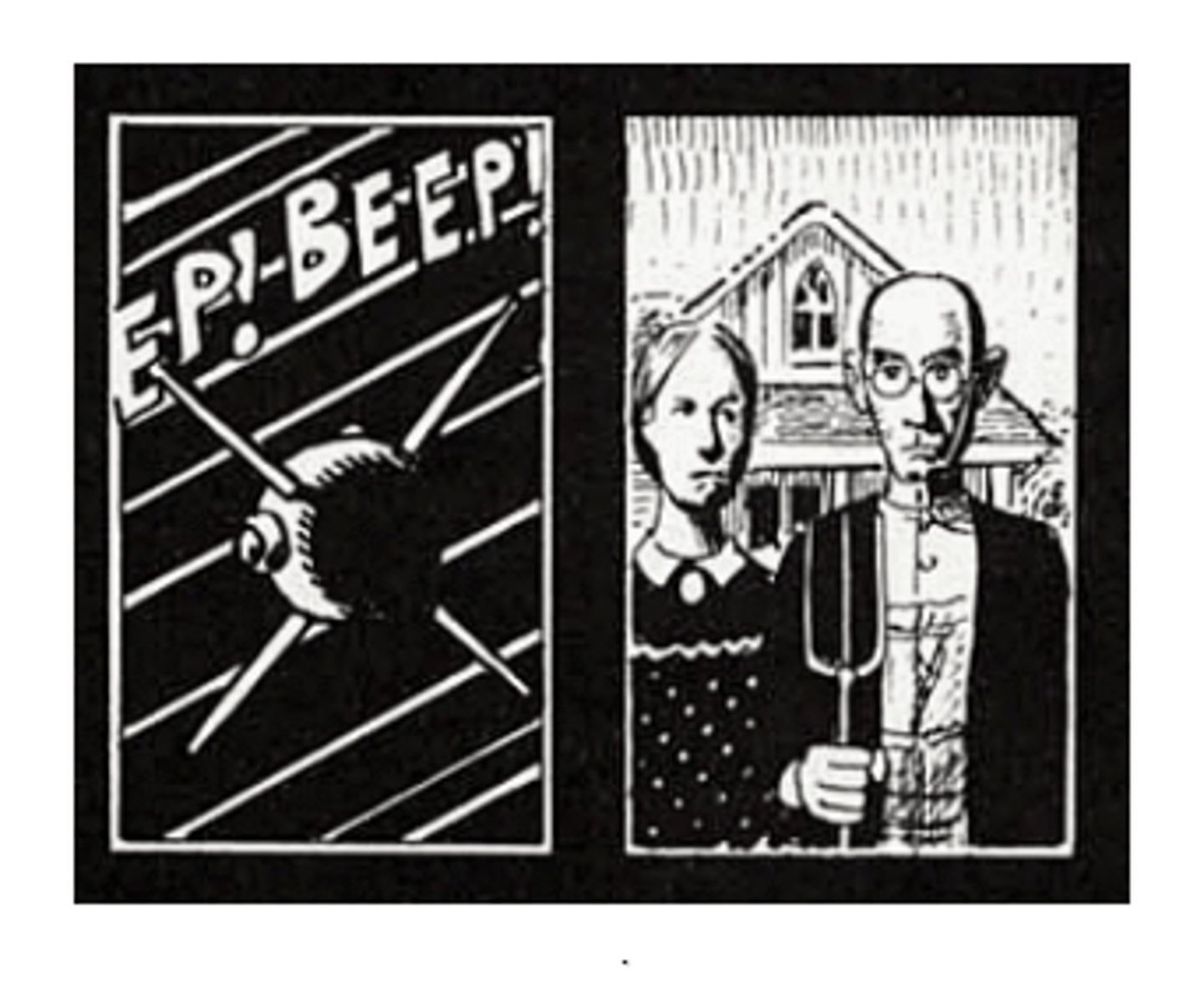Elements of Visual Texts (GRAPHIC NARRATIVES/CARTOONS)
1/24
There's no tags or description
Looks like no tags are added yet.
Name | Mastery | Learn | Test | Matching | Spaced |
|---|
No study sessions yet.
25 Terms
PANEL
An individual frame or drawing in a comic.
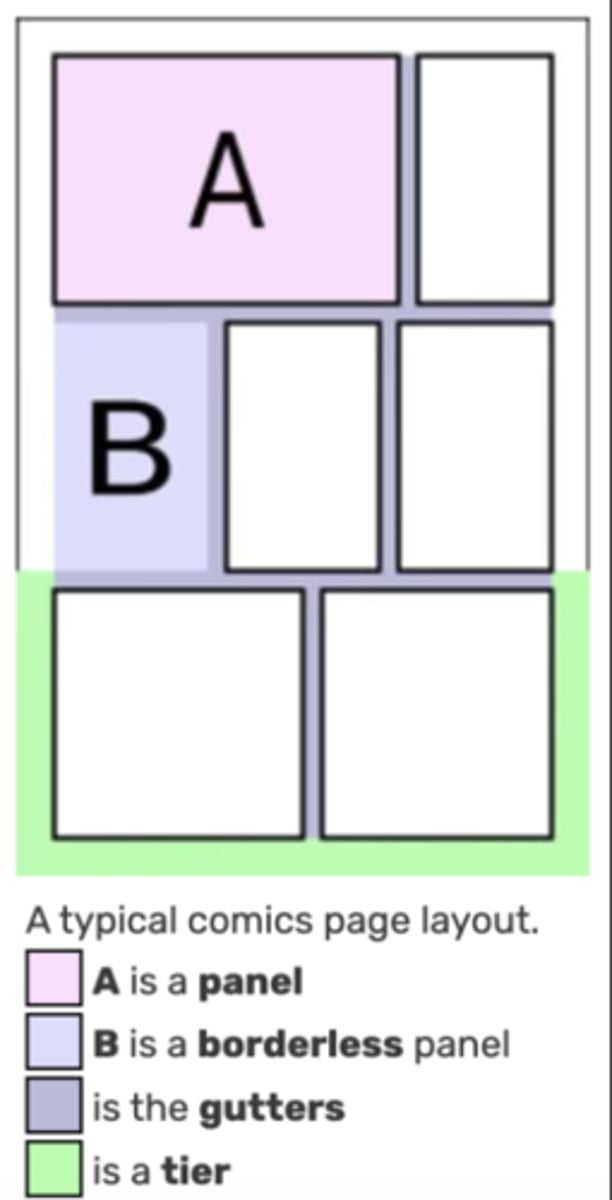
GUTTER
The spaces between comic book panels.
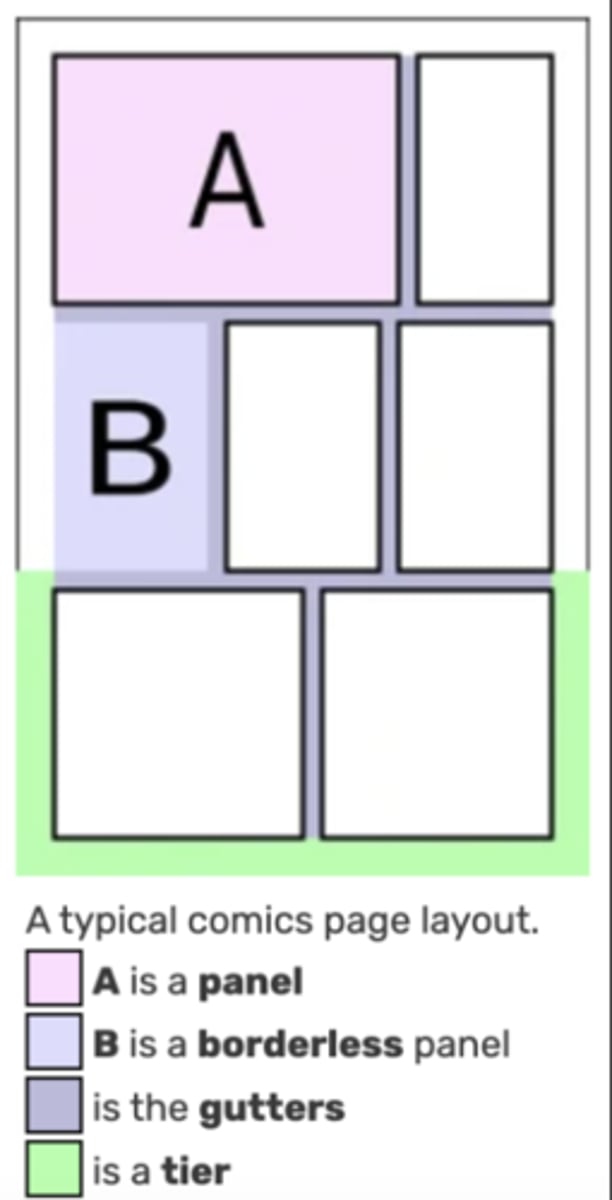
BLEED
When the image extends to or beyond the edge of the page/panel.
SPLASH PAGE
A panel that spans across the entire page (or more than 1 page).
CAPTIONS
A rectangular box that is separate from the rest of the panel and can provide narration or reveal a character's thoughts.
CAMERA ANGLE
Our perspective on the panel. Consider how far away the subject is from the camera (long shot, medium shot, or close up) and how the camera is pitched: bird's eye view, high angle, eye-level, or low angle.
GRAPHIC WEIGHT
The amount of CONTRAST in an image.
SPEECH BUBBLES
A bubble that appears beside and pointing towards a character's head that tells the reader what they're saying.
THOUGHT BUBBLES
A cloud-like enclosed shape, usually white, used to visually manifest a particular character's thoughts.
EMANATA
Unrealistic pictorial elements drawn on the air coming out of (i.e. emanating from) a character, symbolizing something about how that character is feeling, such as a sweatdrop for anxiety or a question mark for confusion.
SOUND EFFECT LETTERING
Words that indicate a sound; the fonts, colors, and lettering of sound effects are important and should be considered as parts of the text.
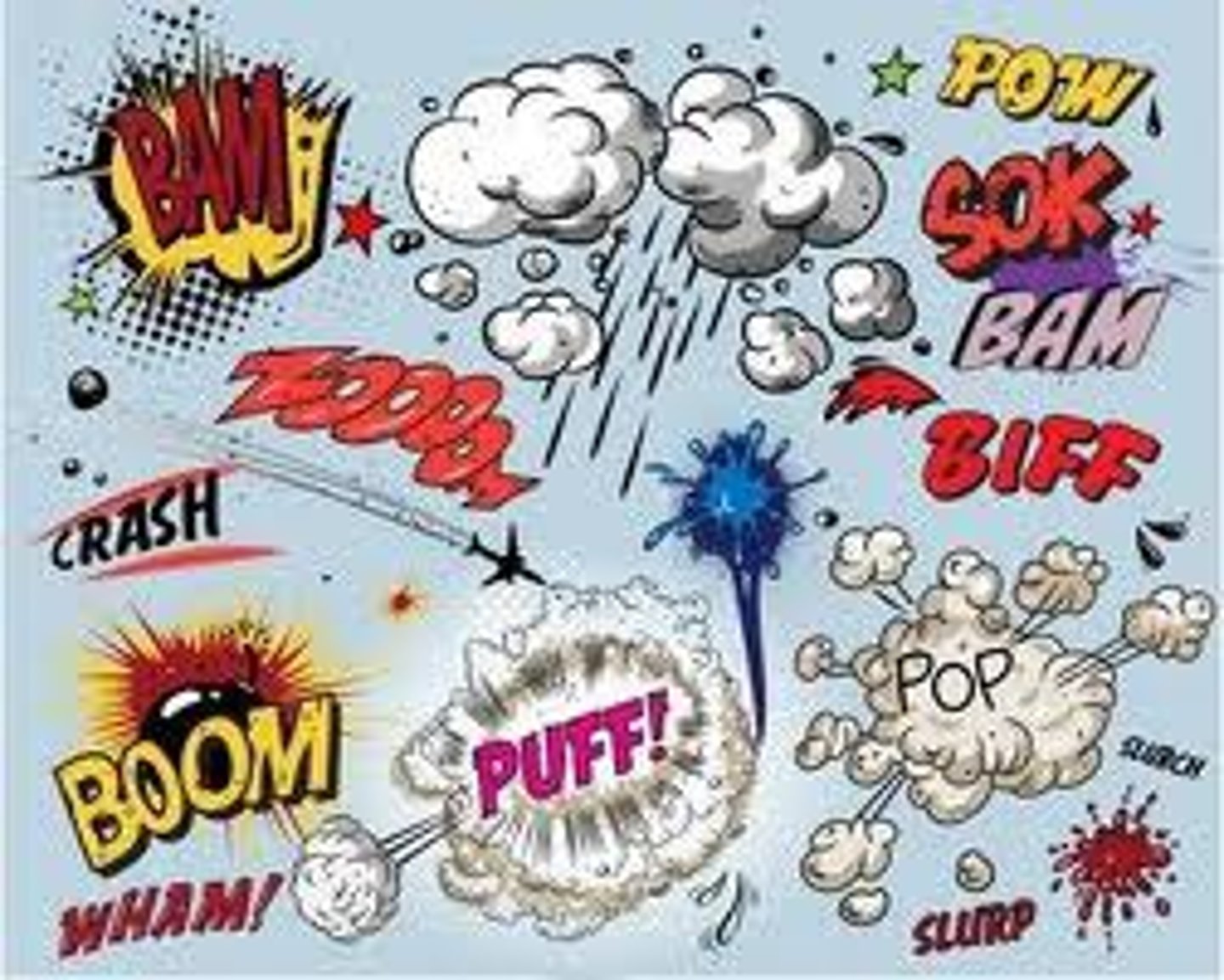
STYLE (ART)
The particular look (use of color, level of detail, etc.) of an artist's work.
STYLE SCALE
Describes the artistic style of the images in relation to reality. Common scales to consider are:
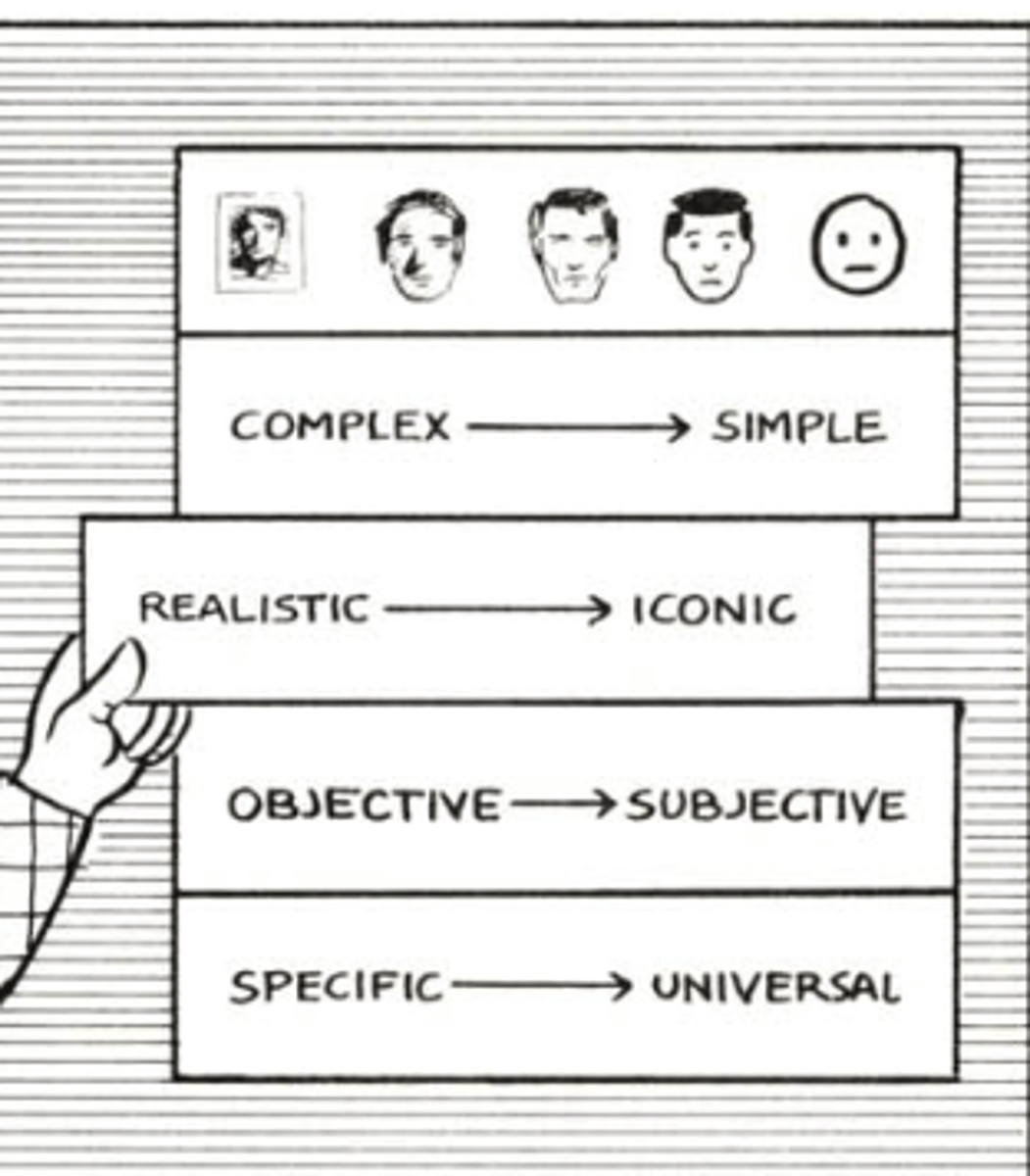
TIME
Graphic texts can tell a story using similar narrative elements as fiction and film.
TIME - Linear Narrative
chronological
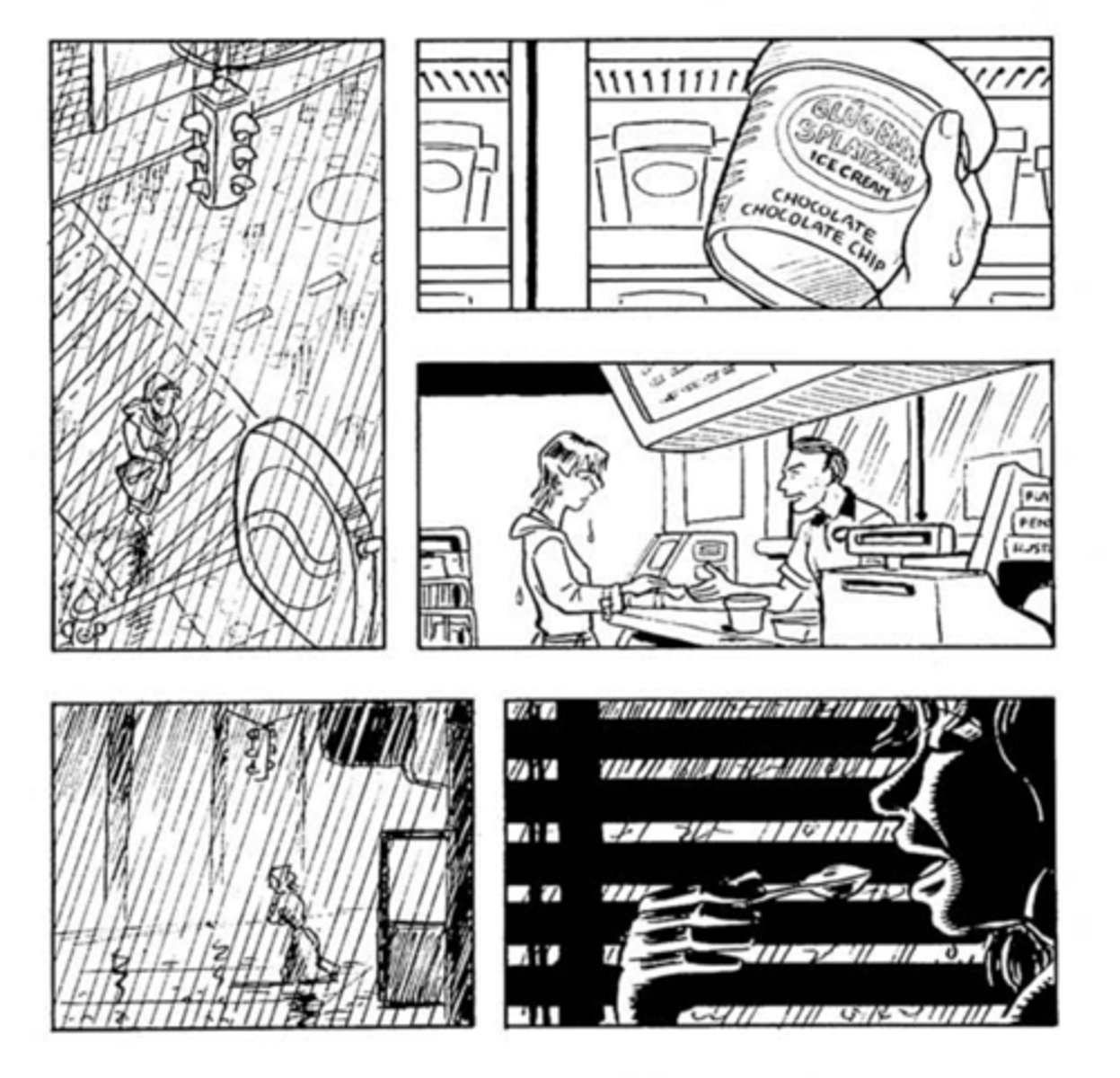
TIME - Analepsis
Flashback
TIME - Prolepsis
Flashforward
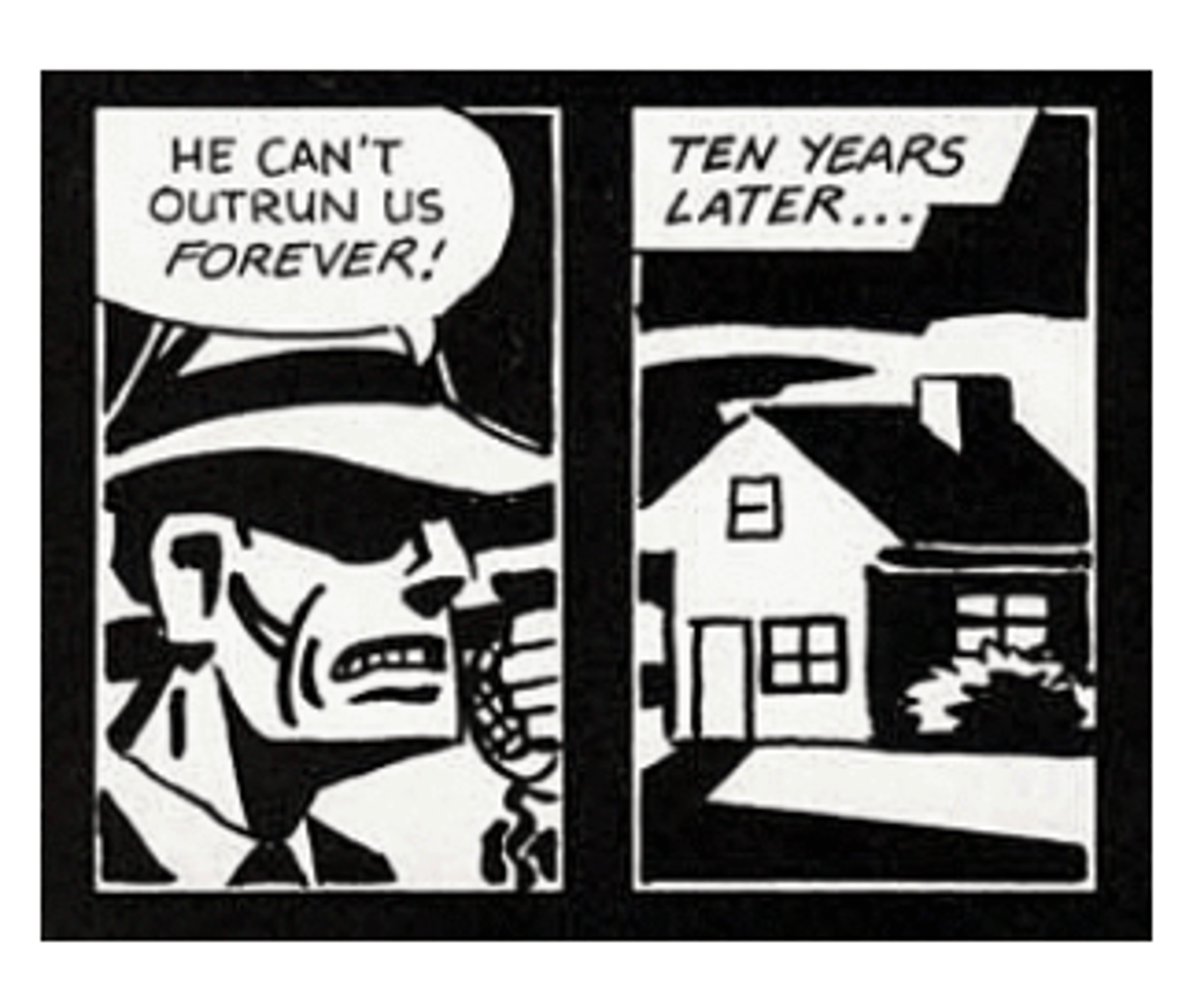
TIME - Montage
Multiple moments in one panel, like a collage.
TRANSITIONS
The process of closure where the reader mentally 'fills in the gaps' in the gutter between panels.
Moment to moment
transitions across a very short period of time (second to second).
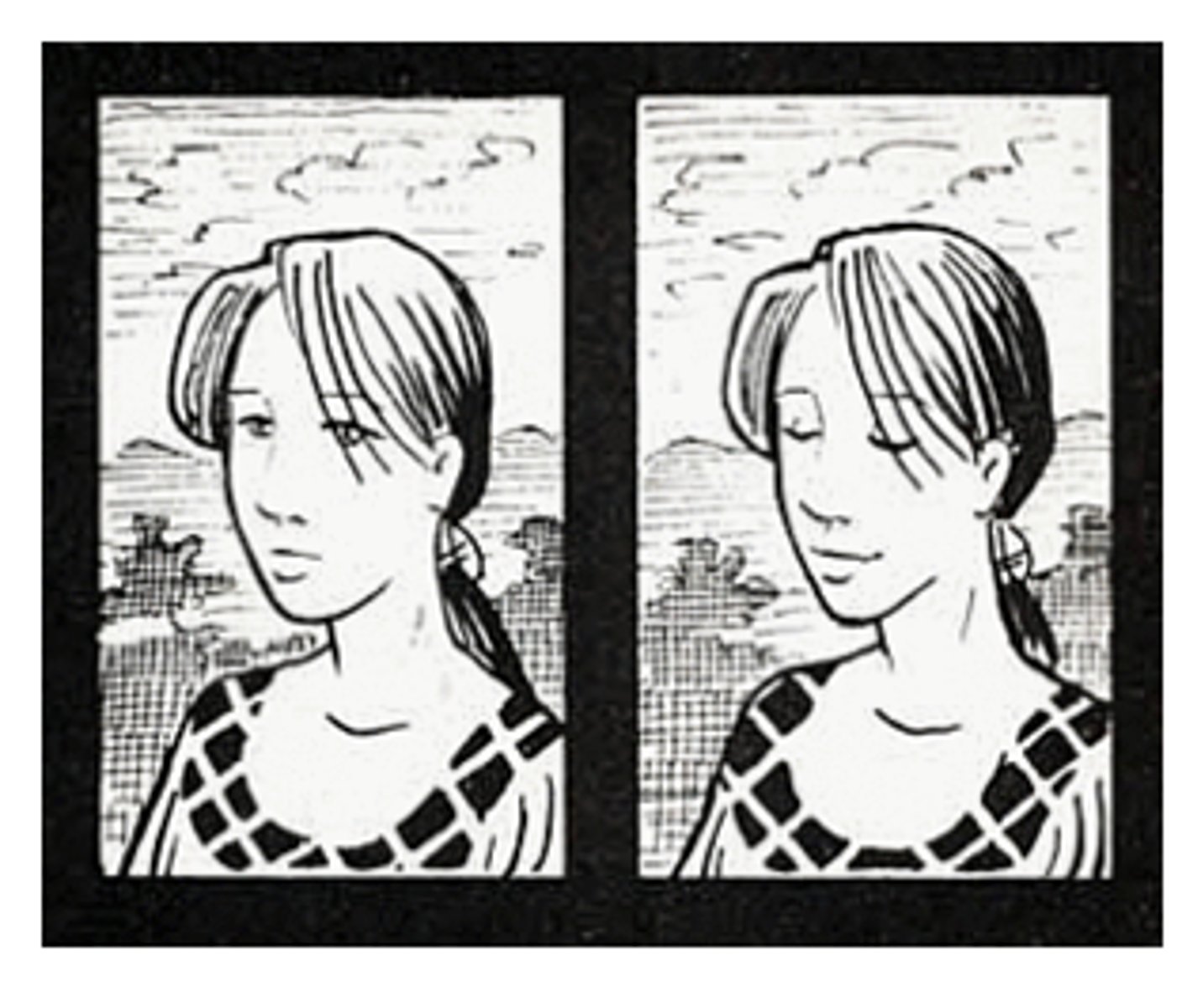
Action to action
Transitions that focus on key parts of a specific action.
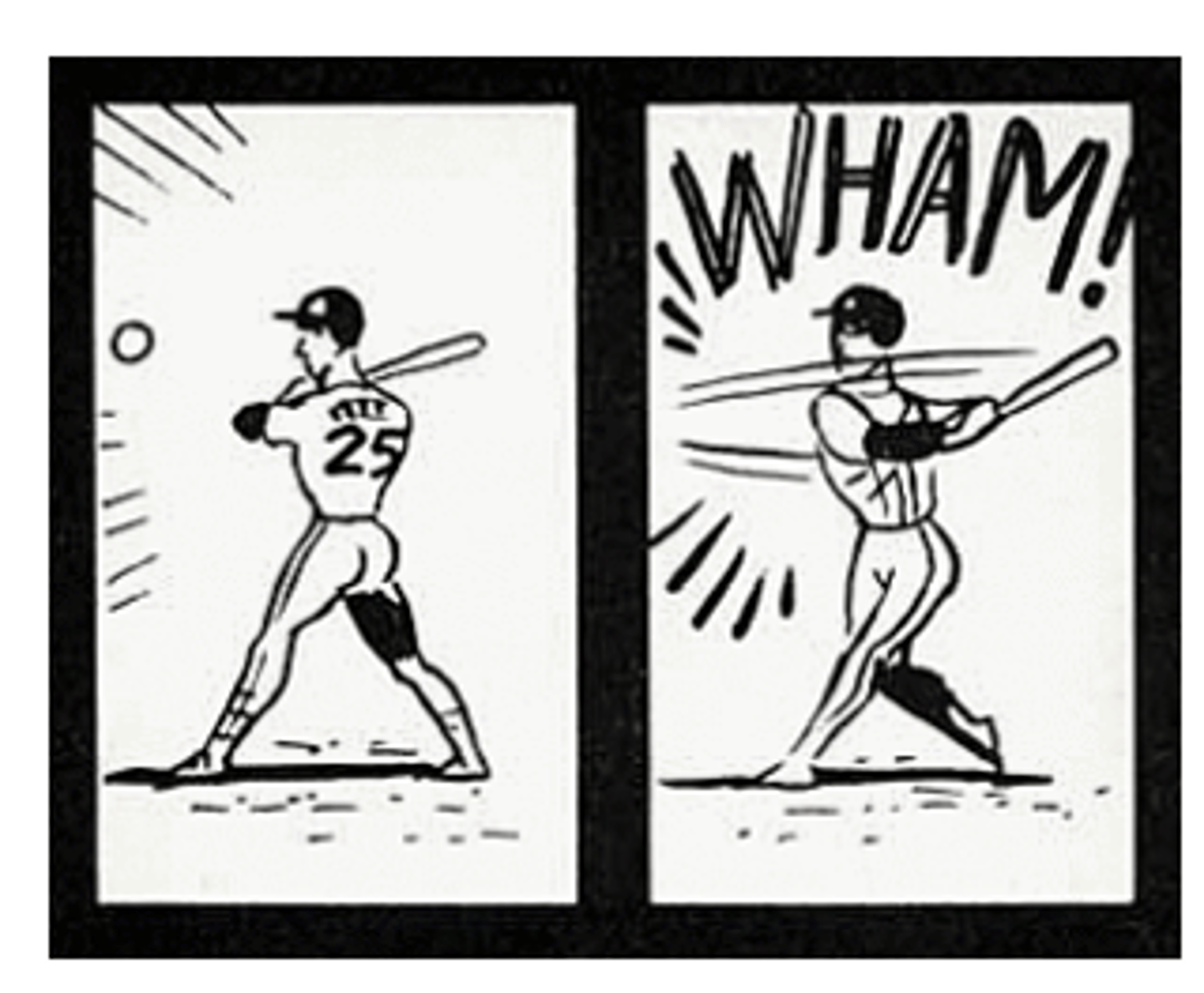
Subject to subject
Transitions between people, places, or things
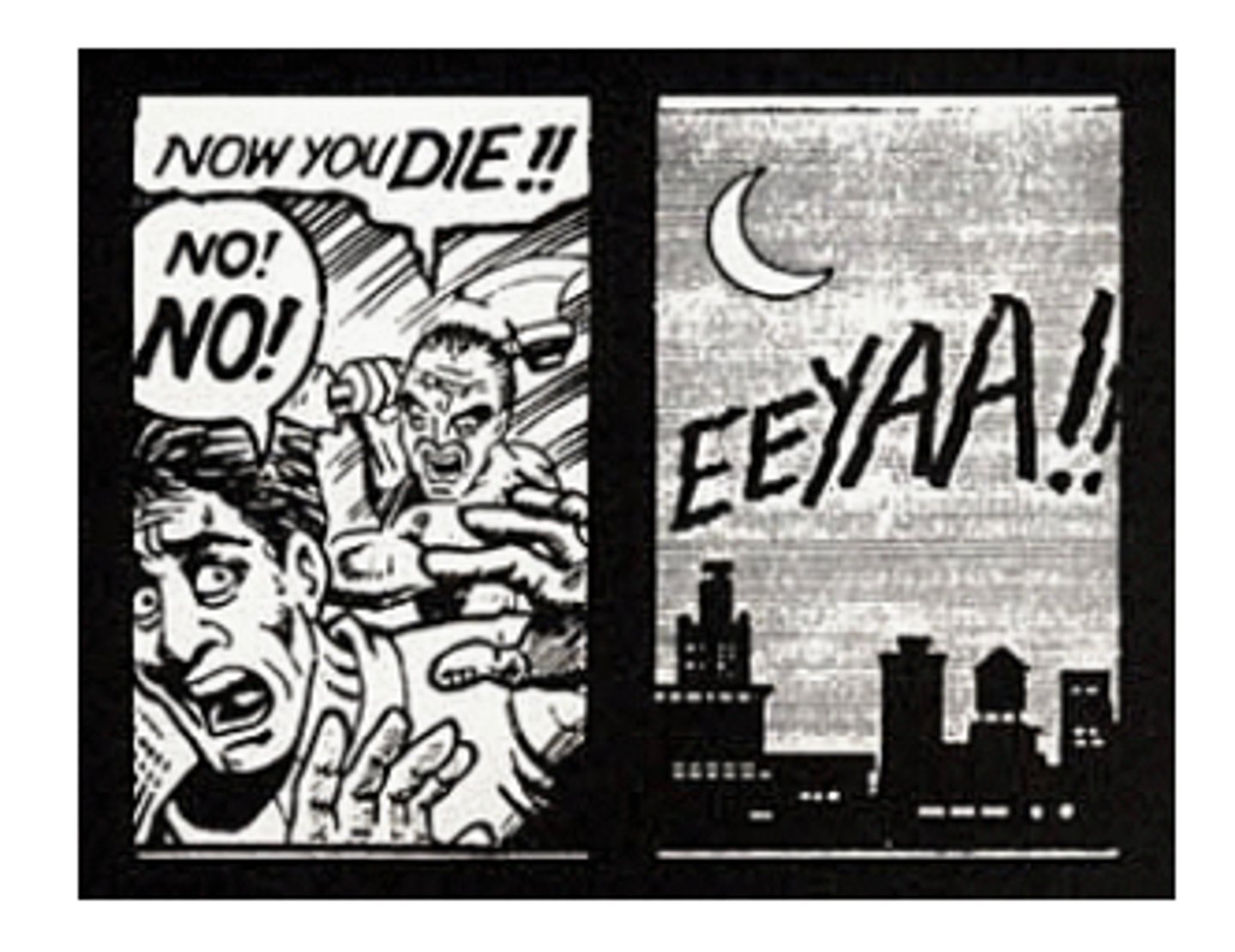
Scene to scene
transitions across significant distances of time and/or space
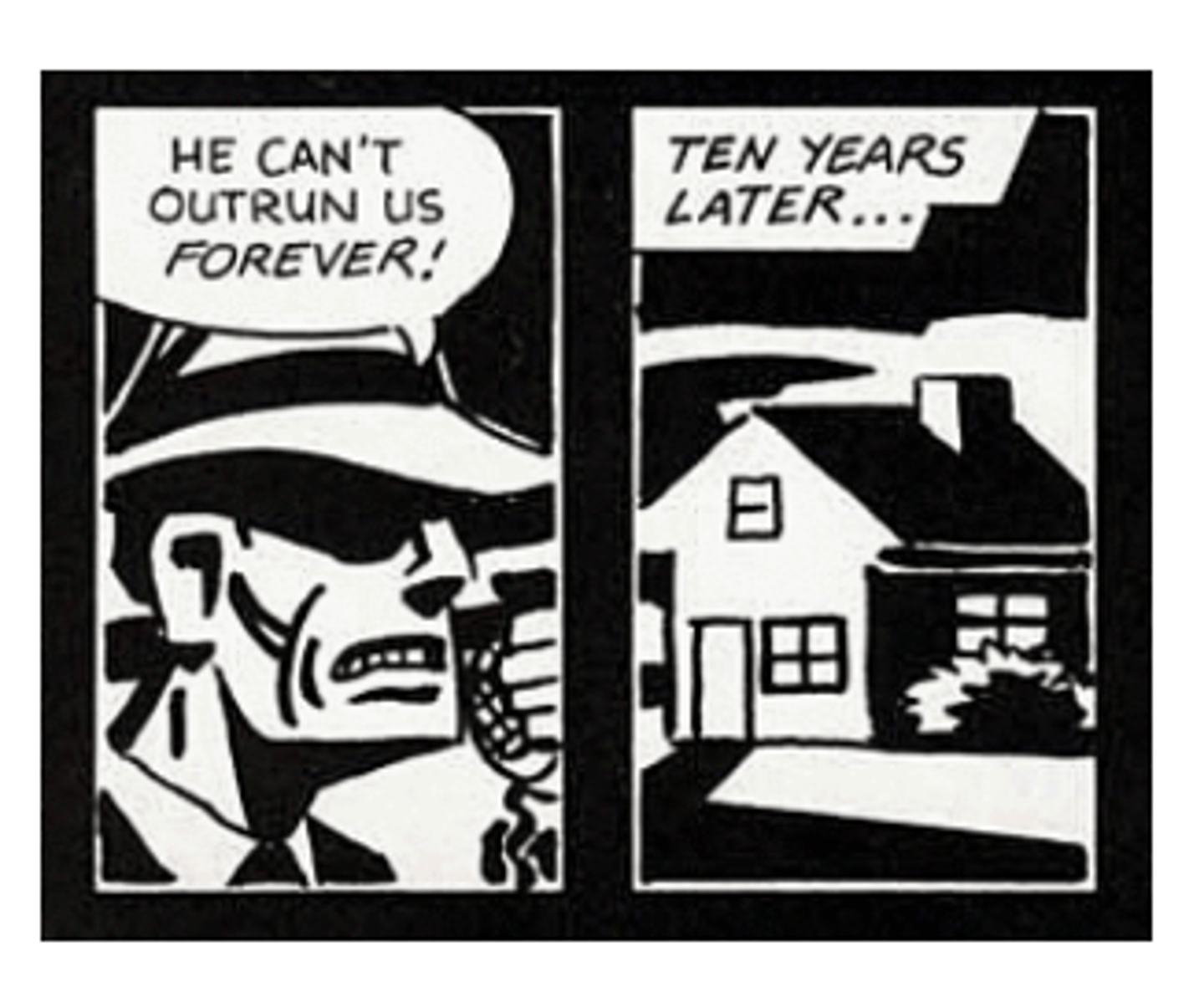
Aspect to aspect
Transitions from one part of an object, place, idea, or mood to another
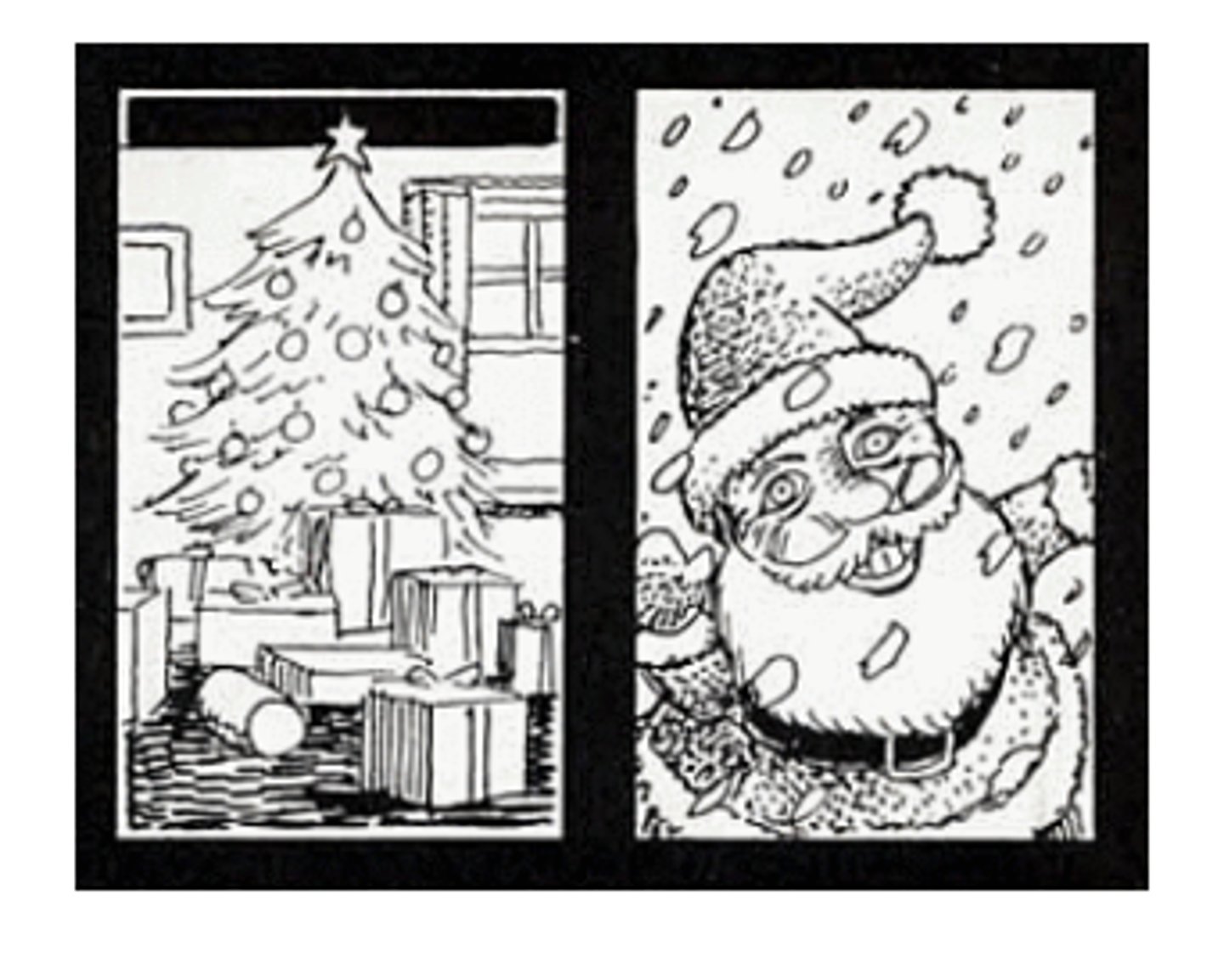
Non-sequitur:
Abrupt and illogical transitions from one subject to another
